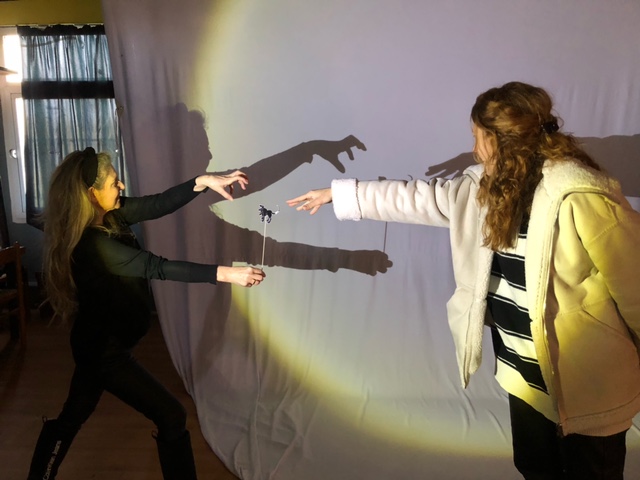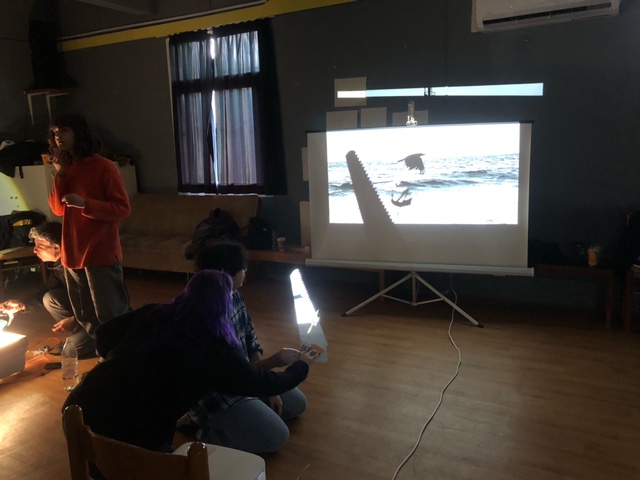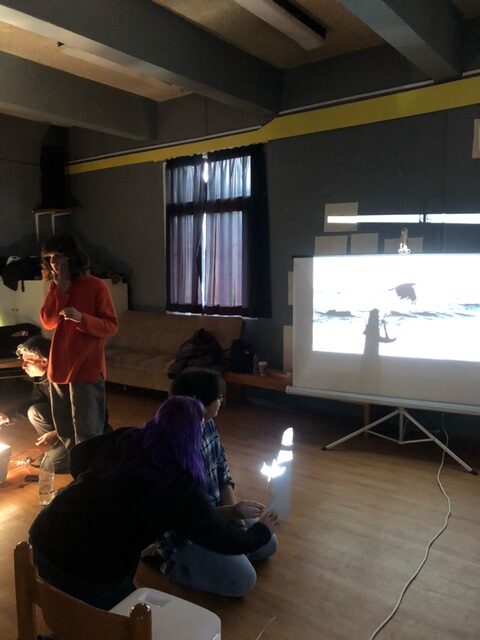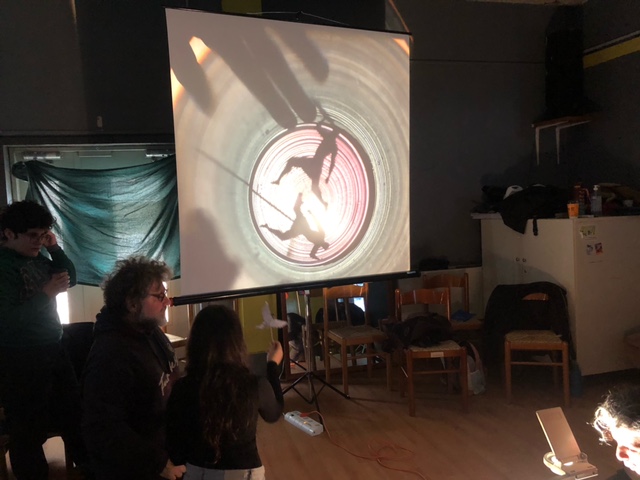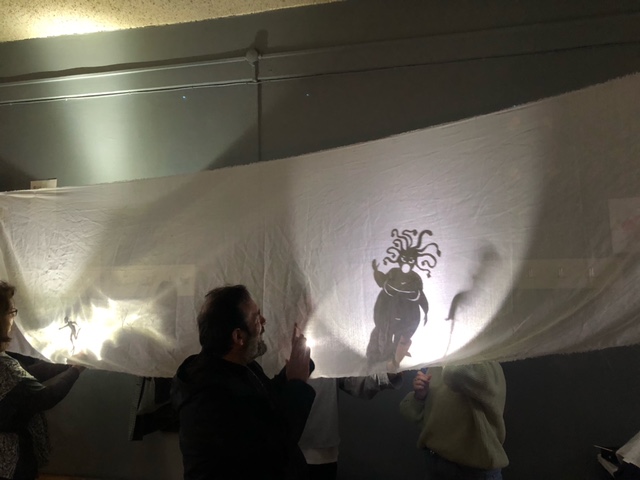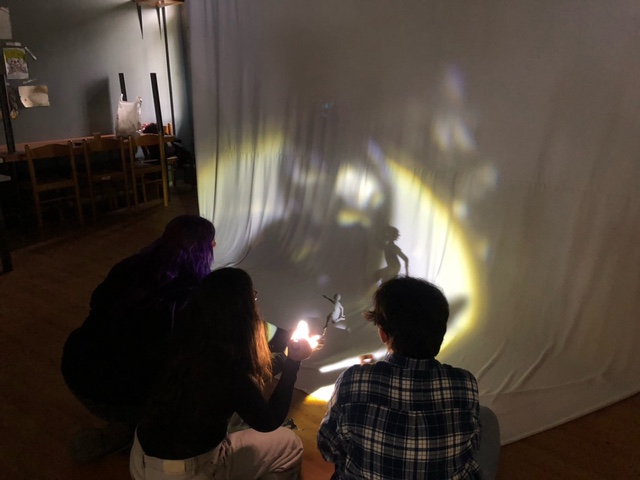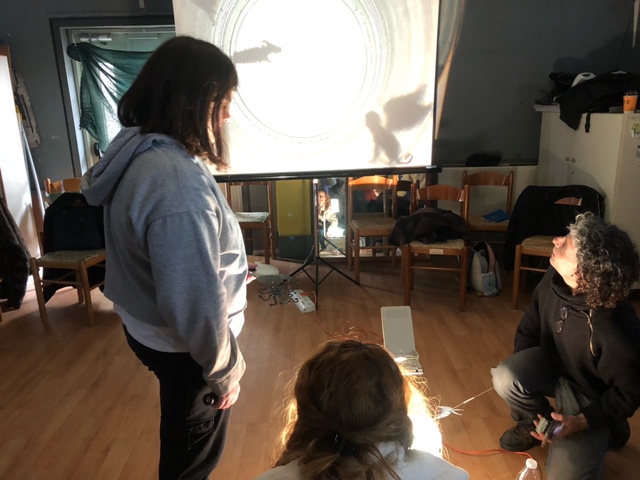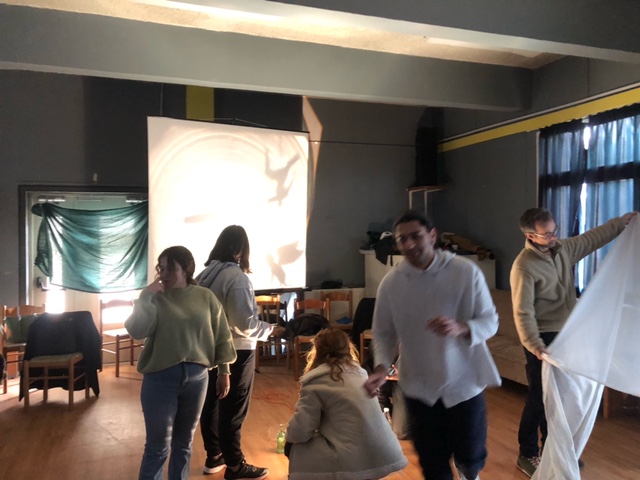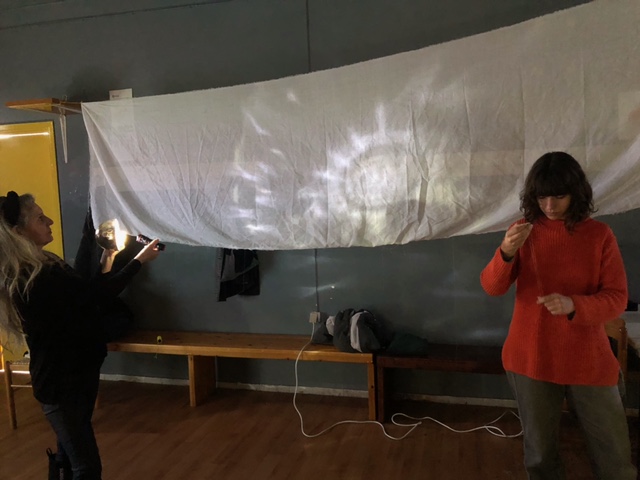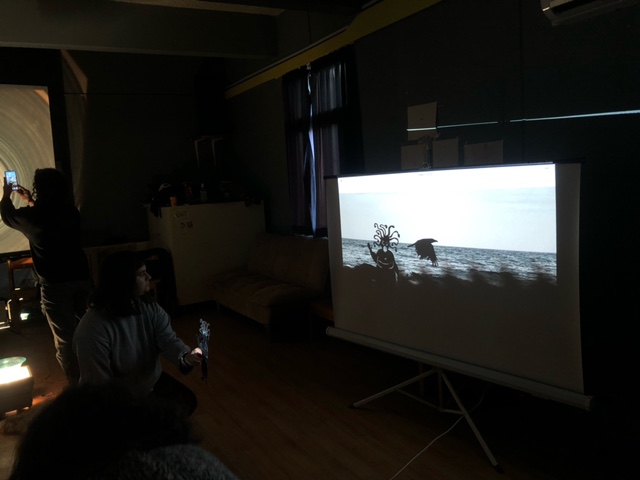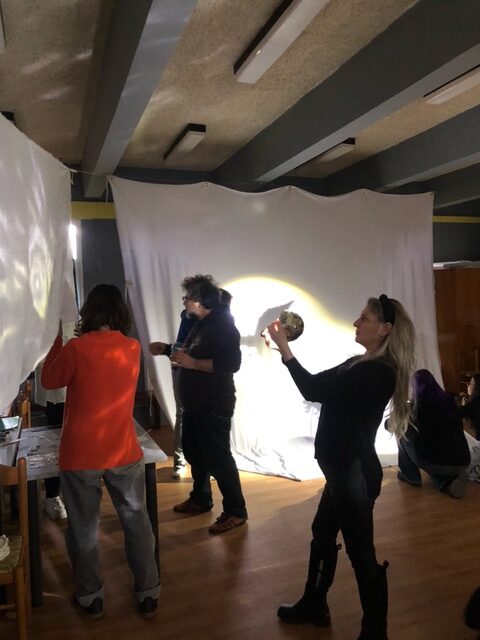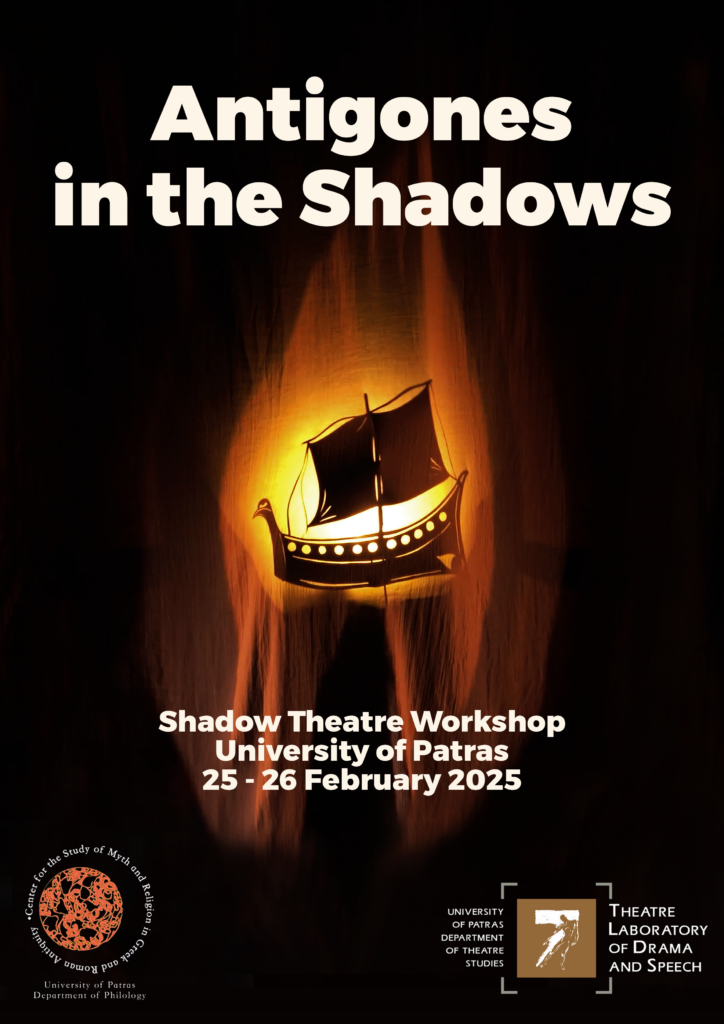
by: YIORGOS KARAKANTZAS and ÉRIC DENIAUD
Under the auspices of the University of Patras Laboratories:
Myth and Religion in Greco-Roman Antiquity (Department of Philology, Director Efimia Karakantsa)
Theatre Laboratory of Speech and Drama (Department of Theatrical Studies, Director Agis Marinis)
Tuesday and Wednesday, February 25 and 26, 2025
Duration: 8 hours, divided into two days, 9 am – 1 pm, Hall BP, building B of the Department of Theater Studies.
Shadows – Shadow Theatre
Shadow theater is associated with the birth of humanity. It’s easy to imagine shadows dancing in prehistoric caves or even Plato’s cave. In ancient Greece, shadow was used by the Oracle of Delphi to create a mystical atmosphere, as shadows allow the representation of other worlds in the collective imagination. Fortune-tellers and fortune-tellers ‘talk’ to the shadows and ‘hear’ them, as they are in ‘communication’ with the spirit world and with death. In the theatre, today, with the combination of various sources of light and video we can produce shadows in the space and give another dimension to the narrative. Shadows can make a narrative more ghostly. Shadows and image projections escape the linear narrative, and the characters of the show come to life, new spaces and places are born simply with a light and a few figures. In the workshop the two artists will explore shadow projection as a way of contemporary theatrical storytelling.
Antigones in the shadows
The myth of Antigone is characterized by transformative tendencies, like every ancient Greek myth, with the difference that the story of Antigone has been transformed, reinterpreted, re-employed and redefined in modern times more than any other myth that comes down to us from classical antiquity. Its powers of metamorphosis and transformation are inexhaustible. All over the world her figure has been used to retell stories of resistance to oligarchic or totalitarian or colonial regimes, stories of emancipation and personal empowerment, stories of gender equality and inclusion of the Other. Antigone is constantly transforming, giving birth to dozens of new ‘Antigones’ who struggle to leave the shadows and come out into the light. This is where the shadow theater meets the many modern Antigones.
Description – Structure of the laboratory
This workshop encourages participants to explore the many facets of shadow theatre, focusing on the use of the body, silhouettes and creating visual narratives.
Procedure:
1. Introduction to Modern Shadows:
– Presentation of the fundamental concepts of shadow theatre.
– Discussing the different possibilities that screens offer, what you can have as a screen, and light sources, as well as what you can do with shadows.
2. Practical Exercises:
– Activities aimed at understanding the different ways of using shadows.
– Experimenting different types of displays and lighting.
3. Dramaturgy of the Shadows:
– Thinking about the narrative and emotional impact of shadows.
– Analysis of dramaturgy and stage presentation elements specific to shadow theatre.
4. Experimentation:
– The participants practice the narration of excerpts from the Antigone that we will have narrated at the beginning of the workshop through a shadow play.
– Creating a space with a shadow theater.
5. Feedback:
– Feedback on the creations made.
– Discuss the lessons learned and the feelings caused by using shadows.
This workshop is a unique opportunity for participants to ‘immerse’ themselves in the universe of shadow theater and enrich their theater practice through an innovative and creative approach. Students gain new skills and an in-depth understanding of the use of shadows in theatrical storytelling using a familiar myth.
YIORGOS KARAKANTZAS
Director
Yiorgos trained at the Academy of Theater in Prague (DAMU) and the National School of Puppet Arts (ESNAM) in Charleville-Mézières, France. In 2001, he co-founded Compagnie La Machine à Racines, followed by Anima Théâtre in 2004. His works include The Cabaret of Lost Souls (2002), Mr. H? (2008), Gojira (2015), Rebetiko (2020), and Mythos (2024). He has collaborated with Théâtre de Cuisine, Cirque Batard Cahin-Caha, and France 3 Television, among others. He has also worked with Cie Paramana in Greece and Cie Alama d’Arame in Portugal. Since 2019, he has been an associate artist at La Garance, National Theater of Cavaillon.
ÉRIC DENIAUD
Puppet Builder
A graduate of ESNAM, Éric has worked as a director, performer, and scenographer for Drolatic Industry, Jean-Louis Heckel, and the National Puppet Theater of Vietnam. He collaborates regularly with Kaze Theater in Japan and co-founded the Kahraba Collective in Lebanon, creating over 15 productions. He co-directs the Nehna wel Amar wel Jiranfestival and the Hammana Artist House. His work Geology of a Fable won Best Show and Best Direction at the Lebanese National Theater Festival (2020).
Photos and video:



